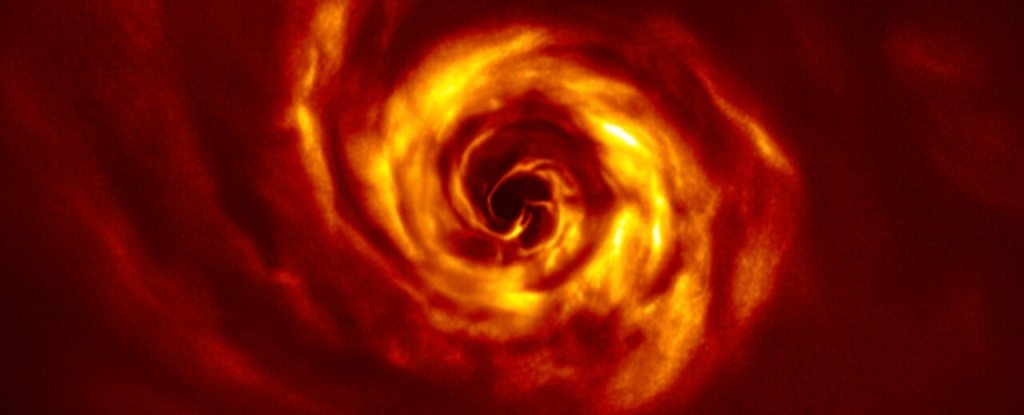
Now, a new paper neatly demonstrates why: a separate team of researchers has found that the swirling dust could be caused by a different object – a forming star, a binary companion to AB Aurigae.
"There has been a lot of speculation about what creates these central cavities (or 'holes') – whether binary stars, or planets, or dust clearing by some other mechanism.".
"A planet alone would not be massive enough to create the strong spiral arms and cleared-out central cavity seen in AB Aurigae," Price told ScienceAlert.
In one model of binary formation, the circumstellar disc around a young star fragments, and part of it gravitationally collapses in on itself to form a second star, pulling the surrounding material around itself in a second, smaller disc within the larger disc.
In the model proposed by Poblete and his team, the spiral observed in AB Aurigae's dust cavity could have been produced by a small star, around half the mass of the Sun, to AB Aurigae's two solar masses - if the binary companion is on a highly inclined orbit between 60 and 90 degrees, around AB Aurigae's poles, and with a high orbital eccentricity.
As Price notes, star formation is a messy process, which can result in orbital weirdness.
"We expect to find a 'weird' configuration in the early stages of binary star formation," Poblete said.
"All this happens when the stars are still absorbing gas from an accretion disc; for that reason, you can get [secondary] discs eccentric and inclined with respect to such discs," Poblete added.
The observed spiral arms in AB Aurigae's disc, the team notes in the paper, are similar to those observed in other forming binary systems such as [BHB2007] 11 and FS Tau A, the latter of which has an orbital inclination between 35 and 60 degrees.
But, as we can't see the object – which isn't actually that strange, given the brightness of AB Aurigae, and the amount of material swirling around – the presence of a binary companion is still hypothetical.
According to Price, a binary companion would slightly displace AB Aurigae in the sky
